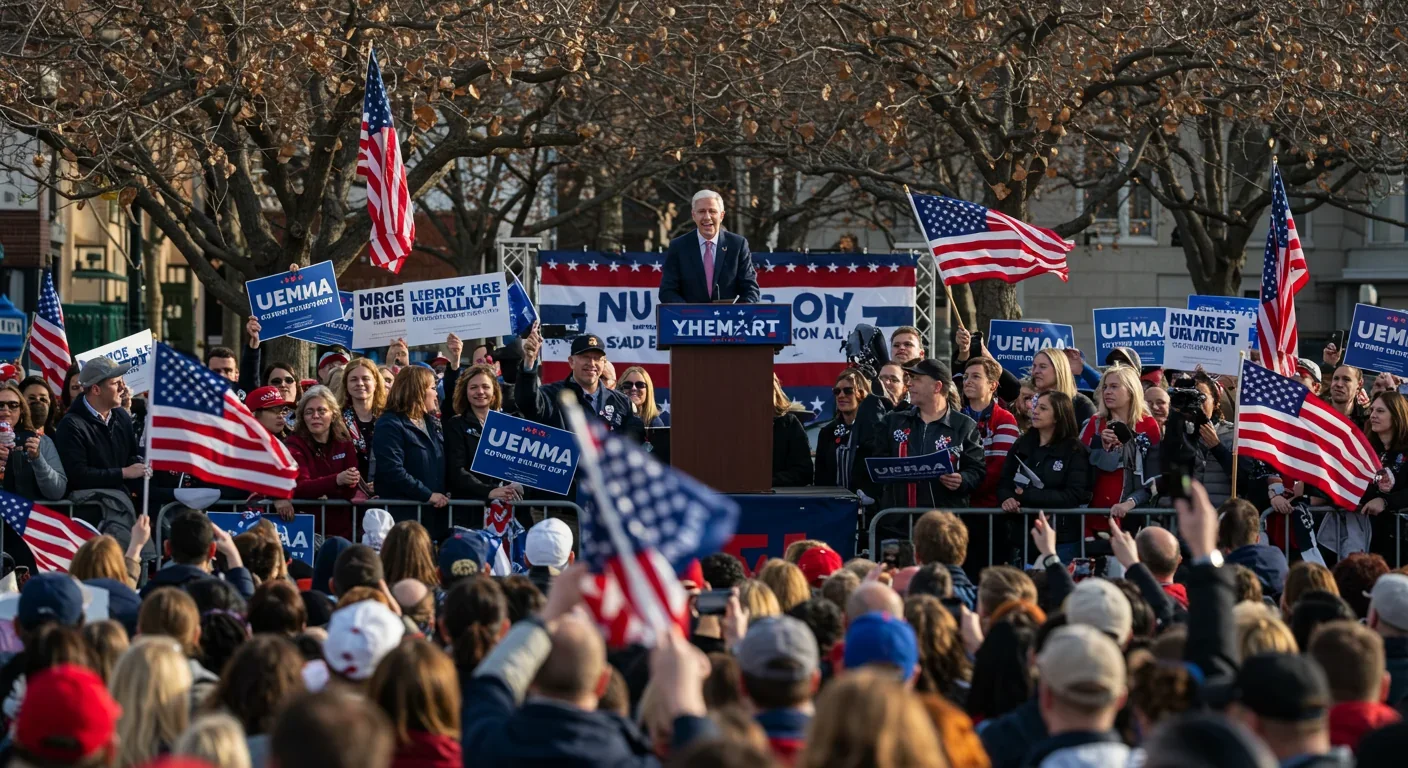Why Your Brain Is Hardwired to Lose Money

TL;DR: Terror Management Theory reveals how our awareness of death unconsciously shapes human culture, from political tribalism to consumer habits. Research across 500+ studies shows that mortality reminders intensify worldview defense, explaining everything from prejudice to climate denial.

Picture this: You're scrolling through social media when you see a news alert about a plane crash. Your thumb freezes mid-swipe. For just a moment, you feel it—that cold reminder that you, too, will someday cease to exist. Then, almost automatically, you push the thought away. Maybe you check your Instagram likes, text a friend, or dive into work. Within minutes, the existential chill fades.
But according to a decades-long body of research, that brief encounter with mortality didn't just disappear. It seeped into your unconscious mind, subtly reshaping your attitudes, your political views, even what you'll buy at the grocery store. This is the startling premise of Terror Management Theory (TMT), a framework in social psychology that argues our awareness of death isn't just scary—it's the invisible architect of human civilization.
Terror Management Theory emerged in the 1980s when three psychologists—Jeff Greenberg, Sheldon Solomon, and Tom Pyszczynski—took a bold idea from cultural anthropologist Ernest Becker and turned it into testable science. Becker's 1973 Pulitzer Prize-winning book, The Denial of Death, proposed that humans face a unique psychological predicament: we're the only animals that know we're going to die.
Unlike other creatures operating on instinct, we possess sophisticated self-awareness and a powerful survival drive. But we also recognize that death is inevitable and largely unpredictable. This creates what Becker called an "existential terror"—a background anxiety that would paralyze us if we confronted it directly.
The genius of TMT was translating Becker's philosophical insights into predictions that could be tested in the lab. The researchers proposed that humans manage their death anxiety through two primary psychological mechanisms: cultural worldviews and self-esteem. Cultural worldviews—whether religious, political, or ideological—offer a sense of meaning, order, and symbolic immortality. Self-esteem comes from feeling like a valuable participant in that meaningful universe.
We tell ourselves: "I matter because I'm part of something bigger than myself—something that will endure after I'm gone."
To test TMT, researchers developed the "mortality salience" paradigm. Participants are randomly assigned to write about either their own death or a control topic (like dental pain). This simple manipulation—asking someone to imagine what will happen to their body when they die—creates measurable psychological effects.
What happens next is remarkable. People who've been reminded of death become more defensive about their cultural beliefs. Christian participants judge other Christians more favorably and Jewish participants more harshly; the reverse happens for Jewish participants. American students express stronger support for U.S. foreign policy. Judges who contemplate mortality set significantly higher bail amounts for alleged prostitutes—an average bond of $455 compared to just $50 for control-group judges.
These aren't conscious decisions. Participants don't think, "I just thought about death, so now I'll be harsher." The effects emerge after a delay, when mortality thoughts have faded from conscious awareness but continue to influence behavior from beneath the surface.

Since the original experiments in the 1980s, more than 500 studies across 30 countries have replicated these basic findings. Researchers have documented mortality salience effects in the United States, Japan, Germany, Iran, Poland, and dozens of other nations—suggesting that terror management is a universal human phenomenon, not limited to Western cultures.
While cultural worldviews provide the framework for meaning, self-esteem acts as a personal buffer against death anxiety. According to TMT, we derive self-worth by living up to the standards of our cultural worldview. If your culture values academic achievement, getting good grades boosts your self-esteem. If it prizes physical strength, athletic success does the trick.
Here's where things get interesting: people with higher self-esteem show weaker responses to mortality salience manipulations. Research on smokers found that anti-smoking messages featuring graphic death warnings worked differently depending on self-esteem levels. Low-self-esteem smokers became more anxious but didn't change their behavior. High-self-esteem smokers, buffered by their sense of personal worth, were less rattled by the warnings and showed smaller attitude shifts.
This creates a paradox: the people most vulnerable to death anxiety—those with low self-esteem—are also the least equipped to respond constructively to health warnings. Instead of motivating behavior change, mortality reminders can trigger defensive reactions: denial, rationalization, or doubling down on existing beliefs.
"The fear of death may promote insecurity, bias, and even global conflict."
— Psychology Today on Terror Management Theory
Self-esteem also explains why threats to our identity feel so visceral. When someone criticizes your political beliefs, questions your religion, or challenges your life choices, they're not just attacking an opinion—they're undermining the psychological architecture that keeps existential terror at bay. This is why debates about values often feel like battles for survival.
TMT's real-world applications extend far beyond academia. Consider what happened after the September 11 attacks. In the weeks following 9/11, President George W. Bush's approval rating skyrocketed from around 50% to nearly 90%—the highest presidential approval ever recorded. TMT researchers argue this wasn't just patriotic solidarity; it was a predictable response to a massive mortality salience event.
When death becomes salient on a national scale, people gravitate toward leaders who confidently assert cultural values and promise security. Studies conducted shortly after 9/11 found that reminding Americans of the terrorist attacks increased support for Bush and for aggressive military action, particularly among politically conservative participants.

This pattern repeats across contexts. During the COVID-19 pandemic, researchers in Poland found that mortality anxiety drove people toward religiosity and dreams of human solidarity, which in turn boosted self-esteem and fostered a "carpe diem" orientation. The study explained 18% of the variance in present-focused coping strategies—quantifying how terror management mechanisms helped people navigate an unprecedented global threat.
Political campaigns instinctively exploit these dynamics. Fear-based messaging works because it activates mortality salience, making voters more receptive to leaders who promise strength, order, and cultural preservation. This doesn't mean voters are being manipulated; rather, they're responding to genuine psychological needs amplified by awareness of threat.
If cultural worldviews protect us from death anxiety, then people who threaten our worldview become psychologically dangerous. This is where TMT offers a sobering explanation for prejudice, nationalism, and intergroup conflict.
When mortality is salient, we don't just cling to our own group—we actively denigrate outsiders. Experiments have shown that after thinking about death, people express more negative attitudes toward immigrants, religious minorities, and political opponents. They're more likely to support authoritarian policies, harsher criminal sentences, and military intervention against perceived enemies.
This isn't abstract theory. Research conducted during election seasons shows that mortality salience increases support for candidates who emphasize traditional values and strong borders. It amplifies in-group favoritism and out-group hostility, turning political disagreements into tribal warfare.
A study of conservative students found that reflecting on death increased their willingness to consider martyrdom themselves and their support for others who chose it.
Even more troubling, mortality salience can increase support for martyrdom and extreme violence. The mechanism is clear: if my cultural worldview is the only thing standing between me and existential terror, I might be willing to die—or kill—to defend it.
TMT doesn't just explain politics and prejudice; it illuminates the psychology of consumption. Why do we obsess over celebrities? Why do luxury brands command such devotion? Why does social media validation feel so important?

Celebrity culture may be psychologically adaptive, according to TMT researchers. Famous people represent what's best about us—our achievements, beauty, creativity. By following and supporting them, we participate in something larger than ourselves, something that will be remembered. In a sense, their immortality becomes our immortality.
Luxury goods work similarly. Buying a Rolex or a Tesla isn't just about telling time or transportation. It's about affirming that you have value, that you've achieved something meaningful according to cultural standards. Every status symbol is, at its core, a small defense against the void.
This explains why materialism often fails to deliver lasting happiness. You can accumulate possessions, but you can't escape mortality. The temporary self-esteem boost from a new purchase fades, requiring another fix. Consumer culture thrives on this cycle, offering endless opportunities to affirm our worth and distract ourselves from the inevitable.
Not all cultures manage terror the same way. Research comparing Buddhist and Western approaches to death reveals intriguing differences. While Western cultures typically emphasize symbolic immortality through legacy and achievement, Buddhism teaches that life and death form a continuous cycle. Rather than denying death, Buddhist practice encourages accepting impermanence.
Interestingly, this acceptance may function as an alternative buffer. Studies show that strong religious faith—whether Buddhist, Christian, Muslim, or other traditions—correlates with lower death anxiety. People who believe in an afterlife or in spiritual continuity experience less existential terror, reducing their need for defensive worldview protection.
This has practical implications. During the pandemic, researchers found that religiosity mediated the relationship between mortality worry and psychological well-being. People who turned to religious frameworks didn't eliminate fear, but they channeled it into culturally approved coping mechanisms that provided meaning and community support.
"When individuals face reminders of death, they feel the inevitability and unpredictability of death and seek a sense of existence, value, and meaning."
— Frontiers in Psychology research on Buddhist approaches to mortality
The cross-cultural consistency of TMT effects, combined with cultural variations in how people manage death anxiety, suggests that terror management is universal but culturally flexible. Every society develops strategies to help its members cope with mortality, whether through religious narratives, communal rituals, or philosophical frameworks.
Perhaps nowhere is TMT more relevant today than in explaining our collective response to climate change. The existential threat is undeniable: rising temperatures, extreme weather, ecosystem collapse, potential civilizational disruption. So why do so many people deny, minimize, or ignore it?
TMT researchers suggest that climate change triggers mortality salience on a massive scale—and our response is classic terror management. Confronting climate reality means confronting our own mortality and the mortality of everything we value: our children, our nations, our species. For many, this awareness is so overwhelming that denial becomes psychologically necessary.

Moreover, addressing climate change requires sacrificing immediate comfort for uncertain long-term benefit—a trade-off that runs counter to the self-esteem buffering strategies we've developed. Driving less, consuming less, flying less—these actions can feel like diminishing our cultural status rather than enhancing it.
The good news is that understanding these dynamics might help us craft more effective climate communication. Rather than leading with apocalyptic warnings that trigger defensive denial, messages could emphasize collective meaning-making: "We're part of something bigger—a global community working together to ensure life continues." This approach aligns with terror management needs while motivating constructive action.
Despite its influence, TMT faces legitimate criticisms. Some foundational studies have failed to replicate in recent years, raising questions about the robustness of certain effects. Critics argue that mortality salience manipulations are artificial, that real-world mortality threats may operate differently than lab-induced contemplation of death.
Others question whether all the observed effects really stem from death anxiety specifically. Could the same results emerge from general anxiety, uncertainty, or threats to self-esteem? Some researchers have proposed alternative explanations, suggesting that what looks like terror management might actually be broader self-protection mechanisms.
There's also debate about cultural scope. While TMT effects appear in diverse cultures, most research still comes from WEIRD populations (Western, Educated, Industrialized, Rich, Democratic). We need more studies in non-WEIRD contexts to truly claim universality.
Long-term longitudinal studies could strengthen TMT's claims about how mortality awareness shapes behavior over years and decades.
Methodologically, the reliance on self-report measures and brief experimental manipulations raises questions. Does writing about death for three minutes really capture the complexity of how mortality awareness shapes behavior over years and decades? Long-term longitudinal studies could strengthen TMT's claims.
Recent neuroscience research adds a biological dimension to TMT. Brain imaging studies show that mortality salience activates specific neural regions associated with threat detection and emotional regulation. When people think about death, their amygdala—the brain's fear center—lights up, along with prefrontal regions involved in suppressing unwanted thoughts.
This neural activity correlates with the psychological defenses TMT predicts. Participants who show stronger activation in emotion-regulation circuits after mortality salience also demonstrate stronger worldview defense behaviors. The brain, it seems, has evolved specific mechanisms to manage existential threat—mechanisms that operate largely outside conscious awareness.
Researchers have also found that neurotransmitters like serotonin modulate mortality salience effects. People with certain genetic variations in serotonin systems show different responses to death reminders, suggesting biological variability in terror management capacity. This opens fascinating questions about individual differences: Why do some people handle mortality anxiety better than others? Could interventions targeting these neural pathways reduce defensive aggression?
Understanding TMT has practical applications across domains. In therapy, existential approaches help clients confront rather than avoid death awareness, potentially reducing anxiety and increasing life satisfaction. By facing mortality directly in a supportive context, people can develop healthier coping strategies than unconscious worldview defense.
In public health, TMT insights inform message design. Anti-smoking campaigns that combine mortality salience with self-esteem affirmation work better than fear appeals alone. Telling someone "smoking will kill you" activates defenses; saying "you're a strong person who can overcome this challenge" provides an alternative path to self-worth.
Marketing professionals have long intuited TMT principles, though often unconsciously. Brands sell symbolic immortality—the promise that your legacy, your style, your values will endure. Life insurance ads don't just sell financial protection; they sell the assurance that your family will remember you well. Luxury brands aren't selling products; they're selling membership in an enduring cultural elite.
Even architecture and urban planning reflect terror management. Monuments, museums, and grand public buildings serve psychological functions beyond their practical purposes—they embody cultural values and promise permanence. Building something that will outlast you is perhaps the most literal form of symbolic immortality.
Where does TMT go from here? Several promising research directions are emerging. Scientists are investigating how digital culture and social media transform terror management. Does Instagram provide new pathways to symbolic immortality through curated digital legacies? Does online tribalism amplify worldview defense?
Climate psychology is another frontier. Researchers are exploring whether interventions that acknowledge eco-anxiety and provide meaningful collective action reduce defensive denial. Early evidence suggests that community-based climate action may satisfy terror management needs better than individual behavior change.
There's also growing interest in positive applications. Rather than just documenting the dark sides of terror management—prejudice, aggression, denial—researchers are asking: Can we harness these mechanisms constructively? If awareness of mortality can motivate prosocial behavior, legacy-building, and meaning-making, how do we amplify those outcomes while minimizing destructive defenses?
Cross-cultural work continues to expand. Studies in China, India, and across Africa are revealing how different philosophical traditions shape terror management strategies. This diversity enriches the theory while confirming its core insights about human psychology.
Terror Management Theory offers a lens for understanding everything from shopping habits to genocide, from religious devotion to climate denial. It suggests that beneath the surface of human civilization runs a deep current of existential anxiety—and that most of what we call culture is an elaborate, mostly unconscious system for managing that anxiety.
This doesn't mean our beliefs and values are meaningless or that culture is mere illusion. Rather, it illuminates why certain ideas and institutions persist: they serve profound psychological functions. Our need for meaning, belonging, and self-worth isn't a weakness; it's a fundamental feature of conscious existence.
The question isn't whether we engage in terror management—we all do, constantly. The question is whether we can do it consciously, with awareness of the psychological forces at play. Can we hold our cultural worldviews more lightly, recognizing them as human constructions rather than absolute truths? Can we derive self-esteem from compassion and growth rather than from dominating others or accumulating status symbols?
Some philosophers and therapists argue that the healthiest response to mortality awareness is acceptance. Not resignation, but a clear-eyed acknowledgment that death is real, that our time is limited, and that this finitude gives life its preciousness. By confronting what we most fear, we might discover new sources of meaning that don't require denying reality or denigrating those who see the world differently.
Nearly everyone fears death. But according to Terror Management Theory, that fear isn't just personal—it's the hidden engine of human culture, driving our noblest achievements and our darkest impulses. Understanding this dynamic won't make death less inevitable. But it might make us a bit more conscious of why we believe what we believe, why we do what we do, and how we might choose differently.
The next time you feel that existential chill—scrolling past news of tragedy, lying awake at 3 a.m., standing at a funeral—pay attention to what happens next. Notice the urge to distract, to reaffirm your beliefs, to seek reassurance that you matter. That's terror management in action. And in that moment of awareness lies the possibility of choosing a response that serves not just your psychological comfort, but your highest values.
Death is inevitable. But how we live with that knowledge—that's up to us.

MOND proposes gravity changes at low accelerations, explaining galaxy rotation without dark matter. While it predicts thousands of galaxies correctly, it struggles with clusters and cosmology, keeping the dark matter debate alive.

Ultrafine pollution particles smaller than 100 nanometers can bypass the blood-brain barrier through the olfactory nerve and bloodstream, depositing in brain tissue where they trigger neuroinflammation linked to dementia and neurological disorders, yet remain completely unregulated by current air quality standards.

CAES stores excess renewable energy by compressing air in underground caverns, then releases it through turbines during peak demand. New advanced adiabatic systems achieve 70%+ efficiency, making this decades-old technology suddenly competitive for long-duration grid storage.

Our brains are hardwired to see patterns in randomness, causing the gambler's fallacy—the mistaken belief that past random events influence future probabilities. This cognitive bias costs people millions in casinos, investments, and daily decisions.

Forests operate as synchronized living systems with molecular clocks that coordinate metabolism from individual cells to entire ecosystems, creating rhythmic patterns that affect global carbon cycles and climate feedback loops.

Generation Z is the first cohort to come of age amid a polycrisis - interconnected global failures spanning climate, economy, democracy, and health. This cascading reality is fundamentally reshaping how young people think, plan their lives, and organize for change.

Zero-trust security eliminates implicit network trust by requiring continuous verification of every access request. Organizations are rapidly adopting this architecture to address cloud computing, remote work, and sophisticated threats that rendered perimeter defenses obsolete.